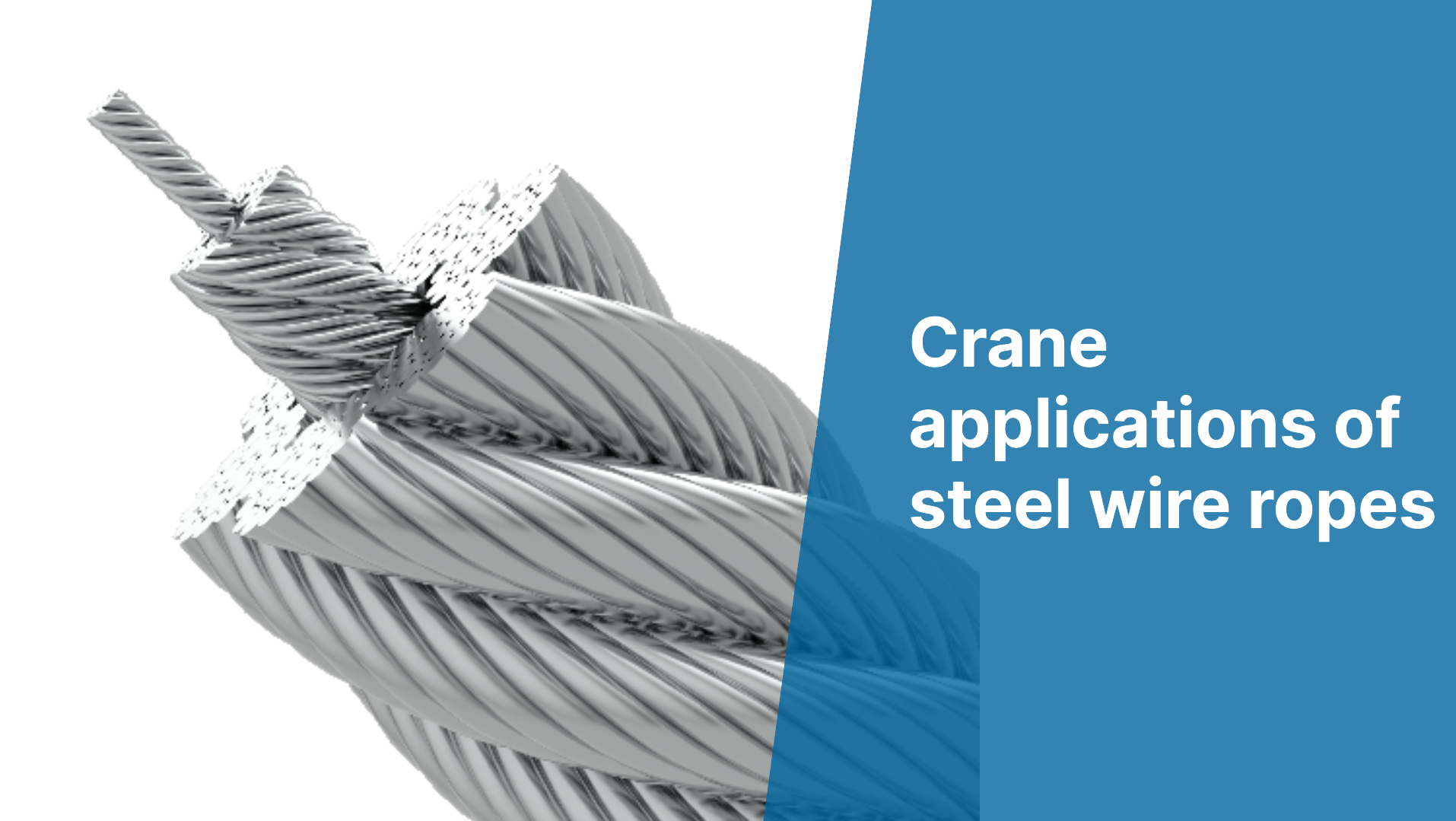
Wire ropes are crucial components in various industries, including
construction, mining, and maritime operations. Understanding the terminology
associated with wire ropes is essential for ensuring safety and their efficient usage. One fundamental term is
"lay," which refers to the direction of the twist of wires in the
rope, categorized as either right-hand or left-hand lay. "Core"
signifies the central support structure of the wire rope, which can be composed
of fiber, wire strand, or an independent wire rope core (IWRC). Another vital
term is "construction," indicating the arrangement of wires and
strands within the rope, such as a 6x19 or 7x7 configuration, denoting the
number of strands and wires per strand. "Breaking strength" denotes
the maximum load a wire rope can withstand before failure, crucial for
determining its suitability for specific applications. Familiarity with these
and other wire rope terminologies is indispensable for professionals working with
these materials, ensuring safe and effective operations across various
industries.
Do wire ropes play a major role in
your business? Heavy-duty steel ropes are designed with specific standards to
meet the requirements of the most demanding applications.
In addition to these, you may come
across numerous other terms when dealing with wire ropes in day-to-day
industrial activities. Below are some of the most commonly used terms to denote
various components of a wire rope:
Wire: A single circular shaped metal of continuous length made from cold
drawn rod.
Strands: It is an element of wire rope consisting of an assembly of
several wires of appropriate shapes and dimensions spun helically in one or
multiple layers.
Core: The core is the foundation of a wire rope. It is an axial member
of rope about which strands are laid. These include Steel core (IWRC, WSC) and
Fibre core (PP, Sisal), combination of steel and fiber cores, and Solid Poly
core.
Rope: Fiber or steel strands are used to construct ropes, which are
then bunched together to form a core surrounded by strands and twisted cores.
Construction: Design of wire rope including no. of strands, number of wires per
strand, and arrangement of wires in each strands. Strand construction in the
wire rope can affect how it handles fatigue, abrasion, crushing, and other
applications.
Some common
construction types are as follows-
●
Seale: The larger outer
wires wrap around a layer of the same number of inner wires, which surround a
core. It is termed as “S”.
●
Filler: - In a 'filler wire' construction, small wires
are placed between larger ones to provide crushing resistance. It is termed as “F” or “FW”
●
Warrington: The outer layer
is made up of wires that alternate between large and small diameters, leading
to excellent flexibility. It is termed as “W”.
●
Combination: Combination
strands can be constructed using any combination of two or more of the patterns
listed above. Eg. Warrington-Seale (WS), Seale Filler (SF), Seale Warrington
Seale (SWS)
●
Single layer: - In single-layer construction, Strands
are made up with one center wire covered with no. of wires in one layer.
●
Multilayer
Construction: - In this type of construction, strands are made up with an
arrangement of multiple layers of different no. of wires of the same size on
each layer.
Lay direction: The direction of rope lay is determined by the direction of
individual strands within the rope that are twisted around the core, and the
direction of the wires within the strands that are twisted around the core. The
direction of rope lay is also referred to using the letters S and Z. By placing
the letters over the rope, the left-hand lay becomes S and the right-hand lay
becomes Z. Also Direction of wires in the strand is specified with a small
letter/case whereas the direction of strands in a rope is specified with
capital letter/case. Eg. RHO rope has strand direction in right hand side and
wires of strands are twisted in left hand side so RHO lay can be termed as “sZ”
and similarly for RHLL lay rope it is termed as “zZ”.
Bharat Wire Ropes
manufactures a wide range of steel wire ropes, spiral strands & slings,
catering to a large number of industries from Oil & Gas, Shipping,
Elevators, Cranes, Mining, Forestry, Fishing, Construction & Ropeways.
Contact us today to learn how our steel wire ropes can create
value for your organization.
Learn more about our products, company & our journey of excellence by visiting our website: https://www.bharatwireropes.com/
For all questions or inquiries from India email us on
domestic@bharatwireropes.com
For all questions or
inquiries from outside India email us on exports@bharatwireropes.com
You can also get in touch
with us by messaging us on LinkedIn- https://www.linkedin.com/company/bharatwireropes/








Post your comment